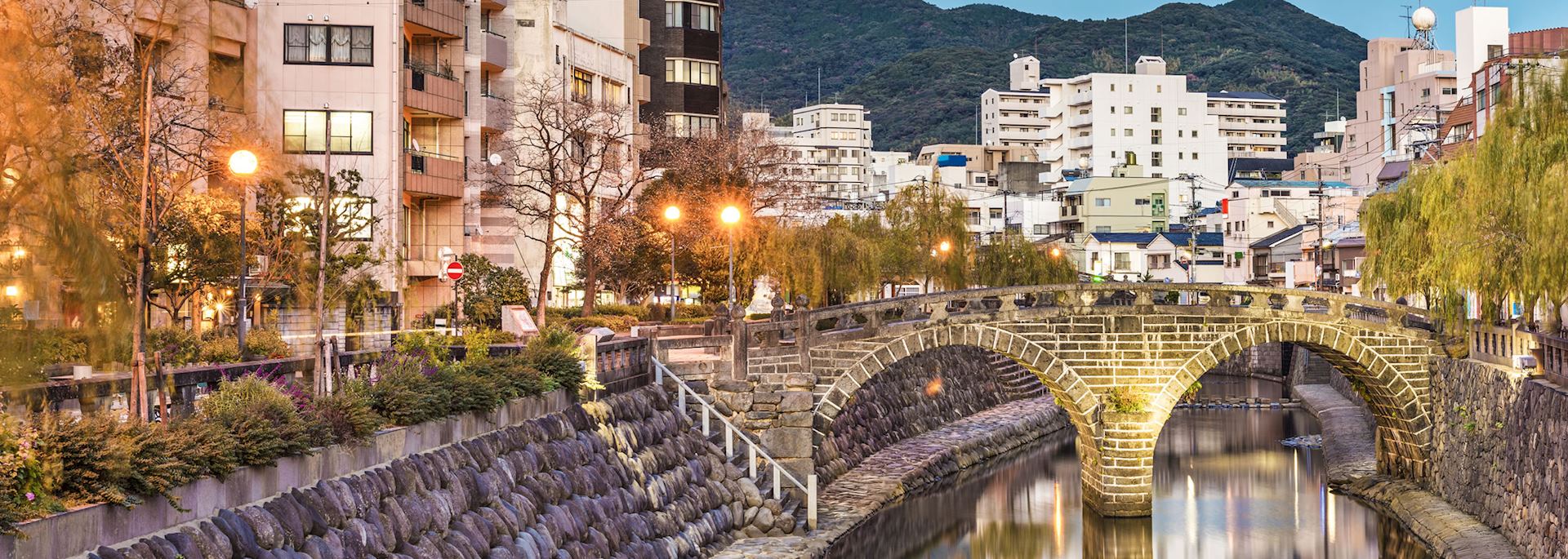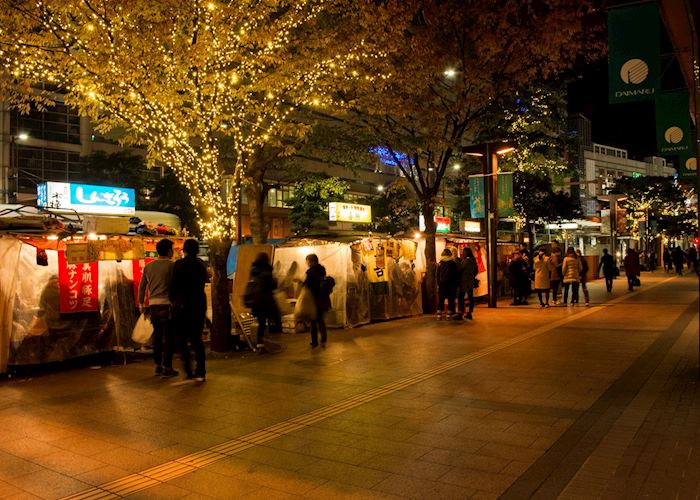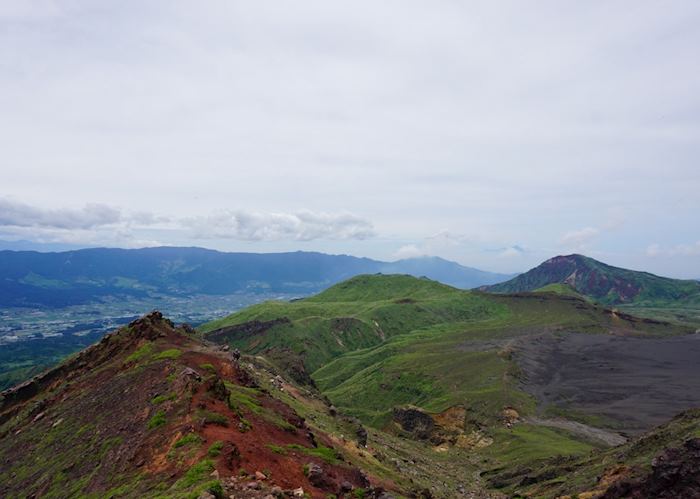Jump to:
Thought by many to be the birthplace of the Japanese nation, Kyushu is the southernmost of Japan’s four main islands, with a turbulent history matched by its seething volcanic terrain.
This island was the focal point of foreign interest in Japan, and the only place during Japan’s long years of self-imposed isolation where contact with the outside world was permitted.
Around Kyushu
 A land of cosmopolitan cities and castles, active volcanoes and scenic crater lakes, Kyushu is a prime location to explore Japan’s history, both ancient and more recent. An ideal location for scenic hikes in an unspoilt landscape and for visiting hot spring resorts well beyond the reach of conventional tourists.
A land of cosmopolitan cities and castles, active volcanoes and scenic crater lakes, Kyushu is a prime location to explore Japan’s history, both ancient and more recent. An ideal location for scenic hikes in an unspoilt landscape and for visiting hot spring resorts well beyond the reach of conventional tourists.
who's been there
-
01993 838 92501993 838 210
- Make an enquiry
Places to visit in Kyushu
Featuring heavily on our experiences of visiting Kyushu, these selected places are destinations that also prove consistently popular with our travellers. Our specialists can help you choose how to include them in your wider trip, based on your preferences.
Suggested itineraries featuring Kyushu
Our itineraries will give you suggestions for what is possible when you travel in Kyushu, and they showcase routes we know work particularly well. Treat them as inspiration, because your trip will be created uniquely by one of our specialists.
Places in and around Kyushu
- Aso Kyushu
- Beppu Kyushu
- Fukuoka Kyushu
- Kagoshima Kyushu
- Kirishima National Park Kyushu
- Kumamoto Kyushu
- Kurokawa Kyushu
- Nagasaki Kyushu
- Yakushima Kyushu
- Yufuin Kyushu
- Matsuyama 118 miles away
- Miyajima Island 121 miles away
- Hiroshima 133 miles away
- Shikoku 154 miles away
- Iya Valley 185 miles away
- Kurashiki 195 miles away
- Takamatsu 198 miles away
- Naoshima 199 miles away
- Matsue 214 miles away
- Tokushima 215 miles away
- Tottori 256 miles away
- Mount Koya 274 miles away
- Osaka 283 miles away
- Kinosaki Onsen 286 miles away
- Nara 297 miles away
Photos of Kyushu
Accommodation choices for Kyushu
We've selected a range of accommodation options for when you visit Kyushu. Our choices usually come recommended for their character, facilities and service or location. Our specialists always aim to suggest properties that match your preferences.
-
![Shared indoor hotspring, Kirishima Hotel]()
Kirishima Hotel
Kirishima National Park -
![Outside the Monterey Hotel, Nagasaki]()
Monterey Hotel
Nagasaki






















